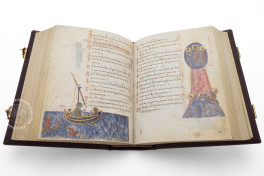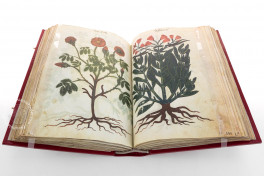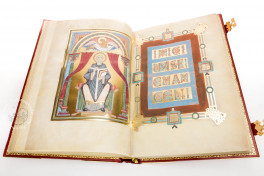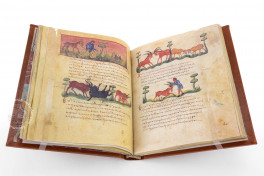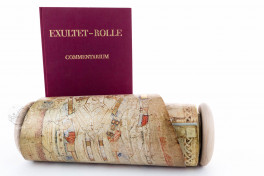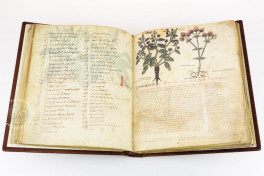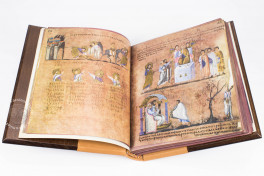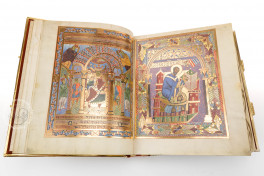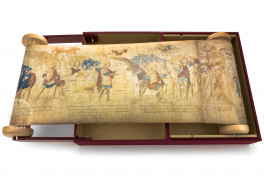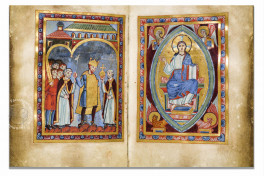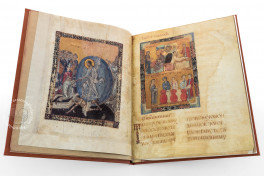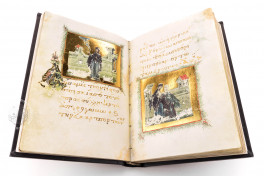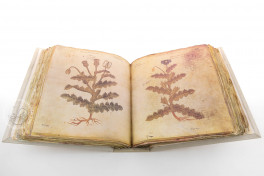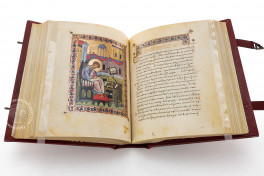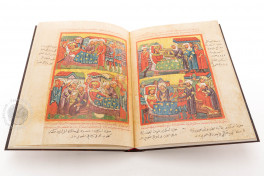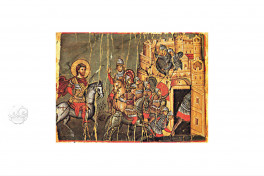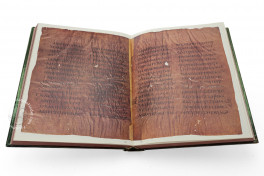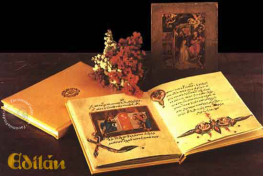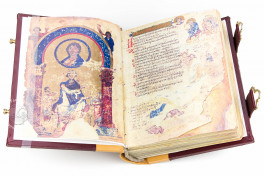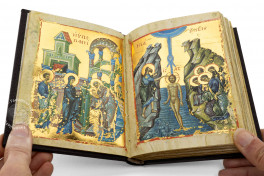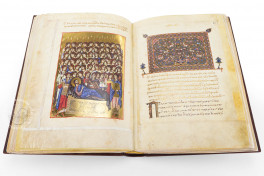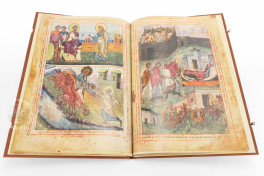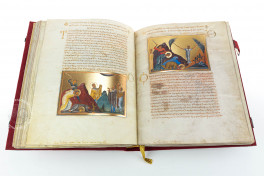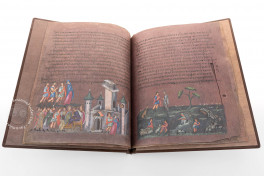The Byzantine Empire took its name from Byzantium, an ancient Greek city renamed Constantinople in 330 CE by Constantine the Great, who also designated it as the Eastern capital of the Roman Empire. Constantinople enjoyed Greek, Roman and Christian influences, but often underwent Islamic invasion from the 7th century onwards.
The opulence of Constantine's cosmopolitan court may have had a direct impact on Byzantine manuscripts (6th-15th centuries). Just like the emperor's regal ceremonies in this glorious new heart of Europe, illuminated manuscripts of the time are sumptuous; they reveal lavish use of gold and other precious metals, bright, vibrant colors and empty spaces often filled with gold leaf in an endeavor to make figures as natural-looking as possible.
The iconography used by Byzantine illuminators was chiefly employed to illustrate Biblical stories. Byzantine manuscripts frequently depicted carefully executed miniatures of the Evangelists. Because Byzantine manuscripts were often exchanged as gifts at royal weddings, in which Western and Eastern Europe ‘met’ via arranged marriages, it wasn't long before German and Italian artists and scribes sought to imitate various Byzantine styles. Carolingian, Ottonian and Romanesque manuscripts all reflect aspects of Byzantine art. Imitation, as they say, is the highest form of flattery.
Between the 8th and the 11th centuries, many Byzantine illuminated manuscripts were destroyed or defaced during the Iconoclastic Crisis. Fortunately, 40,000 Byzantine manuscripts have survived to this day.

